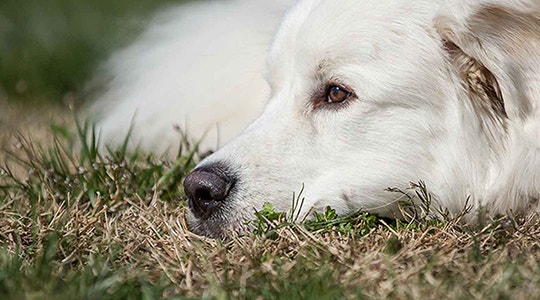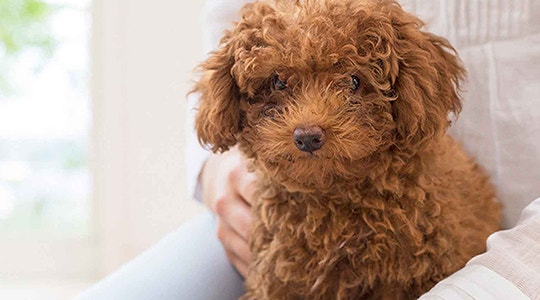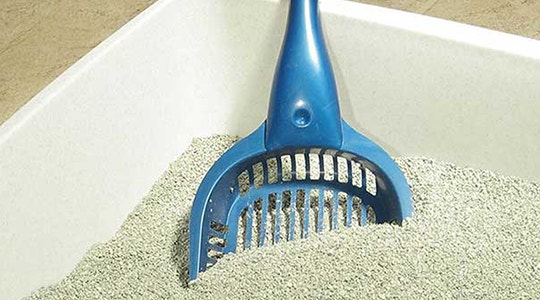
How To Dog-Proof Your Home: Creating a Dog-Friendly Home on a Budget.
Welcoming a new furry friend into your home can be an exciting and rewarding experience, but it comes with its own set of challenges, especially when it comes to creating a safe and secure environment for your canine companion. Whether you're bringing home a playful puppy or adopting a seasoned adult dog, dog-proofing your living space is crucial to ensure the well-being of your new four-legged family member and your belongings.
From safeguarding your furniture to removing potential hazards, this article will guide you through essential steps to dog-proof your home, creating a secure haven for your precious pooch. By taking proactive measures, you can foster a loving and stress-free environment that allows your dog to thrive while keeping your house and belongings intact.
Preparing Your Home for Your Adopted Dog’s Arrival
Start by securing anything your pal could choke on or that may hurt them:
- Pick up small objects like coins, marbles, toys and batteries.
- Clear any loose wires and tie up blind cords.
- Secure trash cans and use lidded ones where possible.
You'll also want to make sure any toxic substances are safely locked away and out of reach. Things like cleaning supplies, medications, garden supplies, and automotive products can be lethal to dogs if ingested, even in small amounts. Cabinet locks commonly used for babyproofing are an inexpensive and effective option.
You'll need to decide whether your dog will be allowed on sofas or the bed. If not, start training how to keep dogs off the couch right from the beginning. Providing your new dog a resting spot of their own is a great way to train them to not jump on the couch. If they do decide your space is better than theirs, calmly guide them to their bed and reward them for laying on it. Consistency is key. Also, keep dining chairs tucked neatly under the table so that they cannot hop up. If your dog is allowed on the sofa, you might want to pick up some stain-resistant furniture covers or throws to protect couches and chairs.
It's a good idea to puppy-proof a single room or area of your home before giving your dog free rein. Baby gates are great for blocking stairways or keeping dogs out of certain rooms, while an exercise pen gives your dog their own space when you're not home to supervise. Once they've learned the rules of the house, you can slowly introduce them to new areas while supervising them. Provide positive reinforcement and treats as they explore so they associate their new space with a rewarding place to be.
With some preparation and patience, you'll have a welcoming space for your canine companion to call home. Put in the effort now, and you'll build a foundation of trust and comfort that will last a lifetime.
Dog-Proofing Tips for Inside the Home

Before investing in expensive items to dog-proof your home, you could start with simple DIY solutions and practice good habits, which may work just as well. You can always research new products or introduce new methods later on, but it’s worth giving these tips a go first!
Block access under furniture like couches, beds, and dressers:
Slide boards, mesh, or netting across any open areas help so your pup can't squeeze into small spots. This prevents them from turning small spaces into hideouts or play areas where they could get stuck or chew on things unseen.
Watch for wires and cables:
It's best not to leave your puppy alone with live wires to appliances. Tuck or hide cords under furniture so they cannot reach them, or conceal them with a flexible spiral wrap, cord concealer, or plastic piping, to keep them out of the way of their teeth.
Be tidy:
We are all guilty of leaving shoes at the foot of the stairs, a wrapper on the table, or a cleaning spray bottle out of the cabinet. But leaving things where your dog can find them invites them to be inquisitive of potentially dangerous items. If your pooch still needs to be trained, be sure to tidy away your belongings. And always remember, whether or not they’re trained, potentially harmful household items such as medicines and cleaning products must be shut in a cabinet that cannot be opened by a clever, exploring paw. You can use inexpensive kiddy cabinet locks to keep your cupboards out of bounds. Supervision is a huge thing for new pet parents! Keeping a close eye on the movements of your new pet will allow you to reward the behaviors you wish to see repeated and to redirect them to something more appropriate to interact with (i.e. a toy instead of a shoe)
Provide interactive dog toys:
to keep them stimulated so they're less likely to chew out of boredom or excess energy. Puzzle toys that dispense treats are ideal for keeping dogs occupied for long periods.
Be consistent and patient through the training process:
Don't give in by allowing them access to prohibited areas or by leaving tempting items within their reach. With time and consistency, they'll learn the house rules, and you'll have a harmonious home for both humans and dogs.
Creating a dog-friendly space may require an investment of time, but it is possible to do it without spending a fortune. The reward of a happy, well-behaved dog and a chew-free home is well worth the effort.
Dog-Proofing Tips for the Yard

Creating a dog-friendly yard on a budget doesn't have to be difficult. With some DIY skills and a little elbow grease, you can make your outdoor space safe and enjoyable for your pup without breaking the bank.
Fence in the yard
The number one priority is containing your dog to the yard. Installing a physical barrier like a fence is the most effective and affordable option. You can buy fencing panels and posts to construct a simple chain link or wooden fence yourself. Bury part of the fencing a few inches in the ground to prevent your dog from escaping underneath.
Provide shade and shelter
Make sure part of the yard has shade so your dog has respite from the sun. You could plant some trees or install an awning.
Add interactive toys
Keep your dog engaged with interactive toys that stimulate their mind and body. Toys filled with treats and balls for fetching are all inexpensive but effective options. You can also make homemade puzzles and games, like hiding treats around the yard for your dog to sniff out.
Watch out for plants and chemicals
Some common plants and gardening chemicals can be toxic to dogs. Do research to identify and remove anything poisonous from your yard. Fertilizers, weed killers, and pesticides should also be avoided or used carefully and according to directions. Provide your dog with some grassy or dirt areas where chemicals have not been applied.
With some time and work, you can transform your yard into a doggy paradise without spending a fortune. Focus on the essentials like containment, shade, shelter, and interactive toys to keep your faithful friend happy in their outdoor space. By taking precautions and avoiding hazards, you'll have peace of mind knowing your yard is a safe space for your four-legged family member.
Teaching Good Behavior: Train Your Dog What Not to Chew
House training a new puppy takes time, patience, and consistency. An important part of the process is teaching your dog appropriate chewing behavior. Puppies explore the world with their mouths, so you'll need to guide your pup to chew only on approved toys and treats.
Provide chew toys
Give your puppy interactive chew toys to discourage chewing on furniture and shoes - such as durable rubber toys you can fill with treats, kibble, or peanut butter can keep dogs occupied for hours. Offer a variety of textures, shapes, and flavors to keep things interesting, and rotate through different toys to prevent boredom.
Redirect inappropriate chewing
If you catch your puppy chewing on something inappropriate, quietly redirect them to an appropriate chew toy. Once they start chewing the toy, praise them enthusiastically. Consistency and repetition will teach them what they should and shouldn't chew on.
Provide exercise and play
Dogs often chew out of boredom, excess energy, or anxiety. Give your pup plenty of exercise, play, and mental stimulation every day to prevent destructive behavior. Try interactive puzzle toys, learning new cues, playing fetch, or walking together. A well-stimulated dog is a happy dog!
With time and consistency, your puppy will learn better chewing habits. Be patient through the process and offer plenty of positive reinforcement. Soon, you'll have a well-behaved member of the family!
Why is it Important to Dog-Proof Your Home?
Dog-proofing your home is one of the most important things you can do as a responsible pet owner. Your furry friend depends on you to provide a safe environment; accidents can happen if you're not careful.
There are a few key reasons why dog-proofing your home is so important:
- It reduces the risk of injury. By securing potential hazards like loose wires, toxic plants, sharp objects, and fragile items, you lower the chance of your dog hurting themselves.
- It minimizes damage. When dogs are bored or anxious, they may chew on whatever they can find. Dog-proofing helps avoid damage to your floors, furniture, shoes, and other belongings.
- It promotes good behavior. Limiting access to things your dog shouldn't chew or play with makes it easier for them to learn appropriate behaviors and house rules.
- It gives you peace of mind. Knowing your home is safe and secure for your dog means you can relax and avoid constantly worrying about what they might get into next.
Simple steps such as closing doors to certain rooms, securing trash cans, removing loose items from counters, and providing interactive dog toys can make a big difference. It's also a good idea to literally get down to your dog's level to identify any hazards at their eye level. While 100% dog-proofing may not be possible, taking measures to secure dangers and teach your dog proper behaviors will help ensure their safety, protect your home, and strengthen your bond of trust.
Those are just a few easy ways to dog-proof your house without breaking the bank. Whether you make your own toys, find used gear on sale, or make simple changes around the house, your furry friend will appreciate your effort. And a happy dog usually means a happy owner. Before you know it, you'll have the perfect pad for you and your faithful companion to call home.




